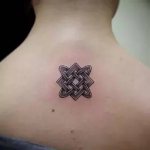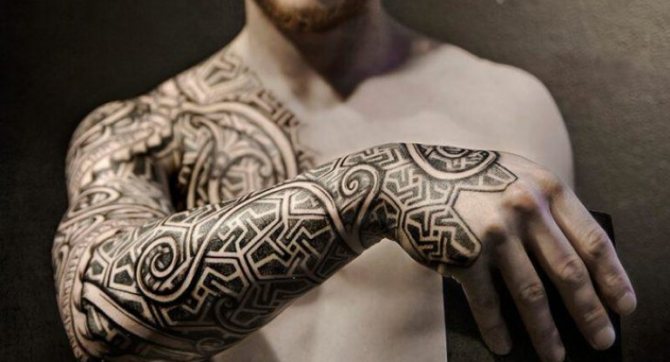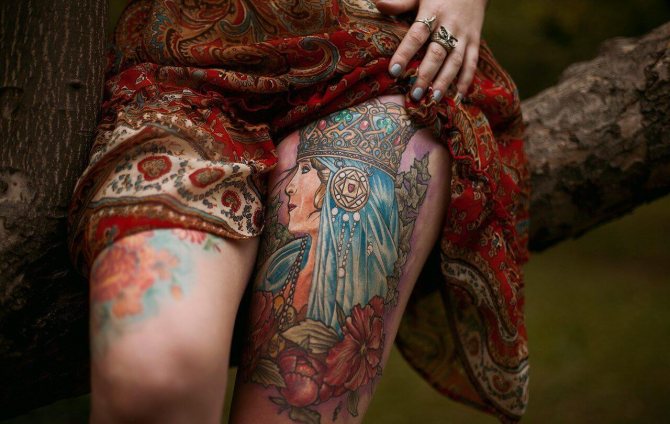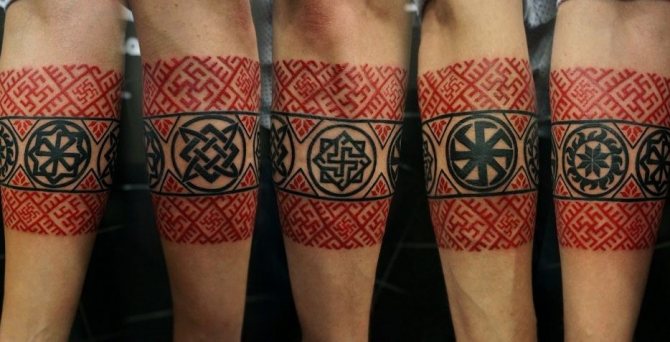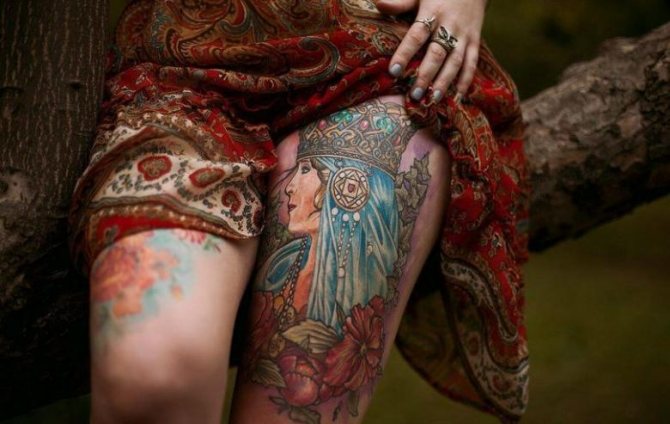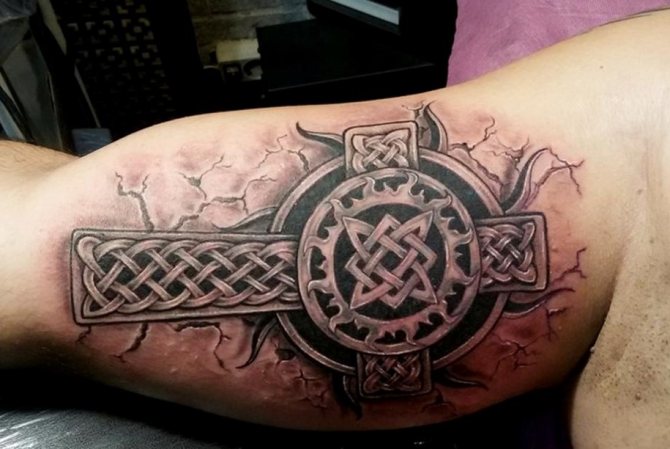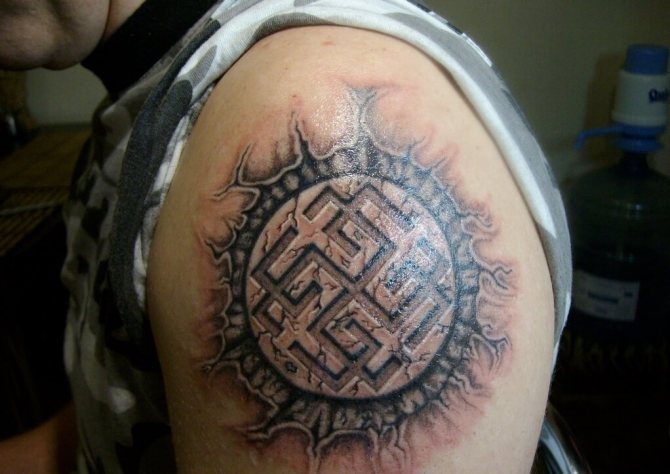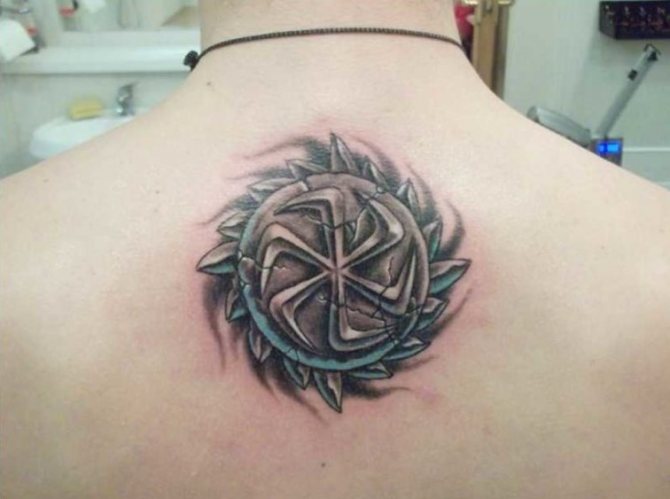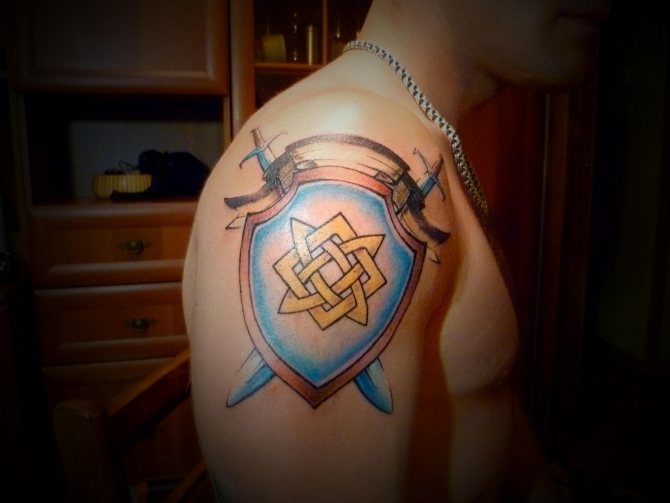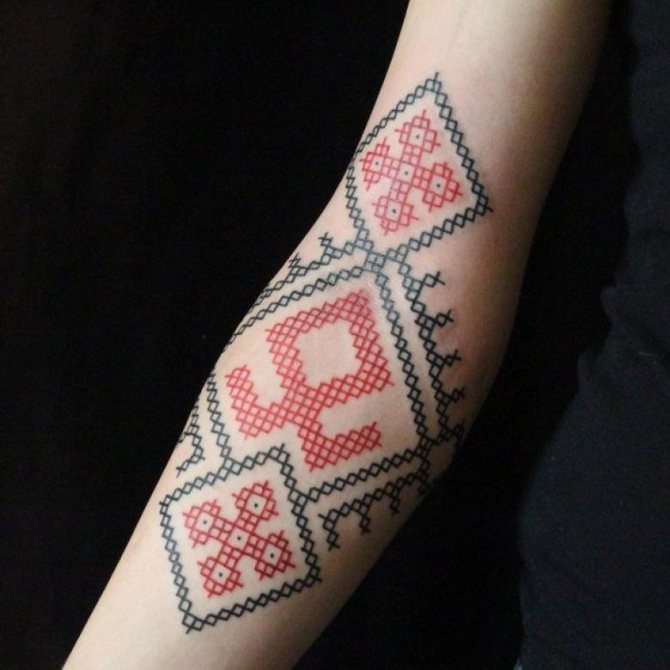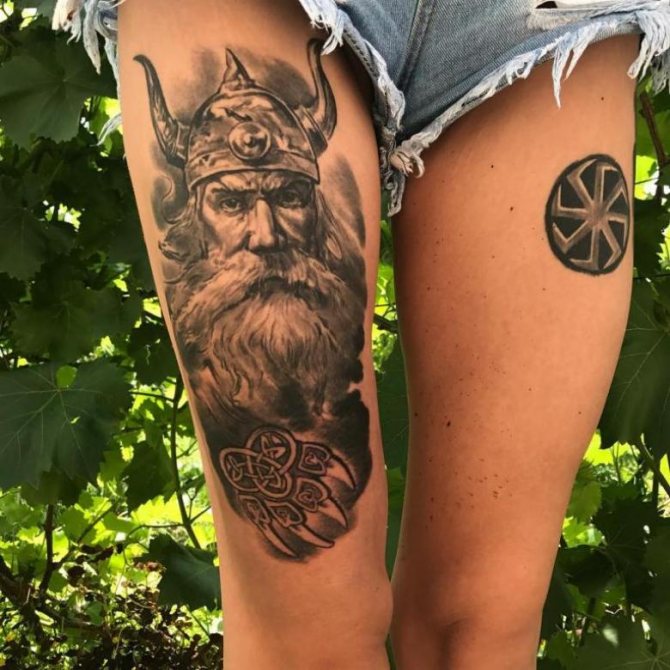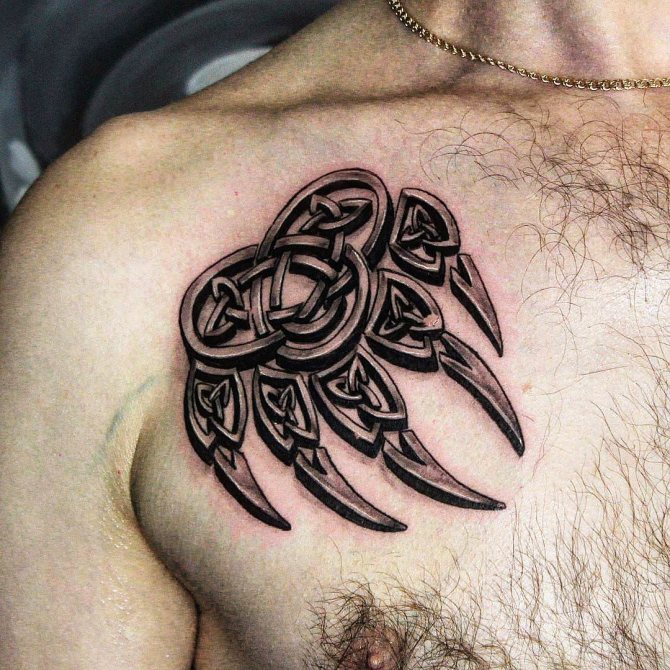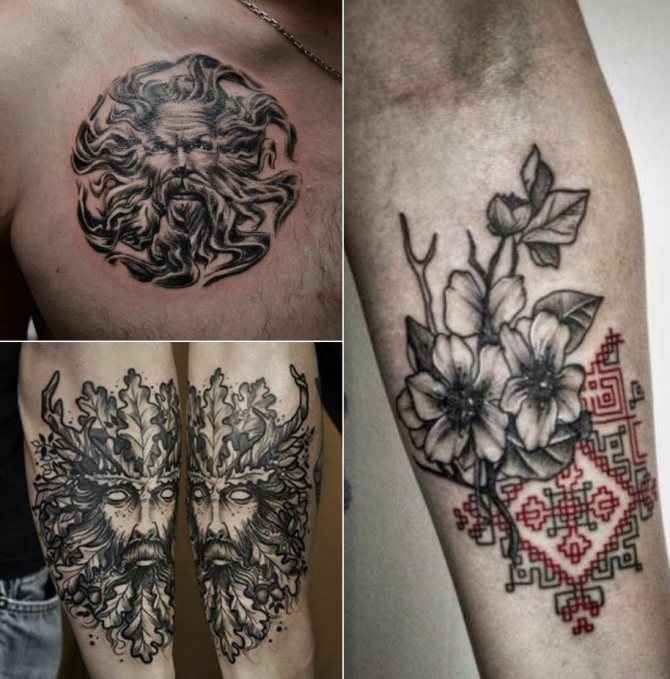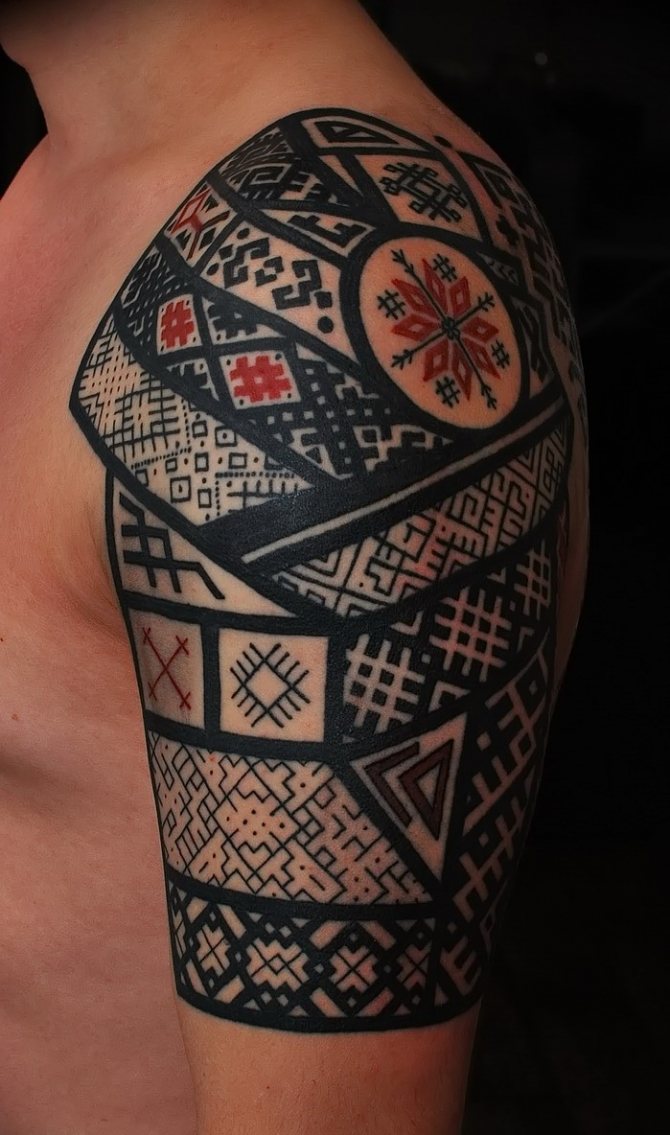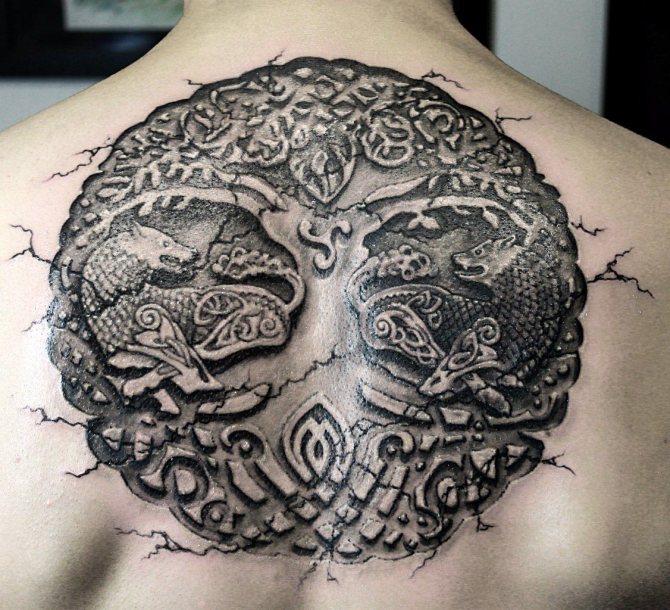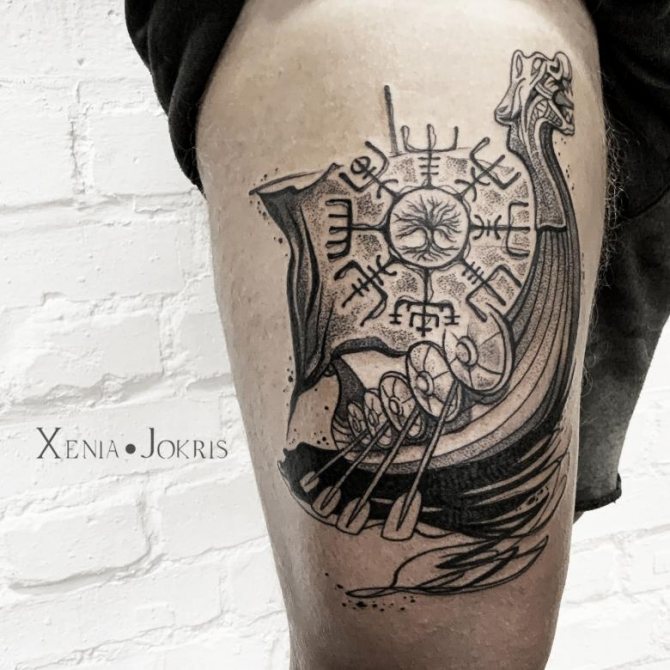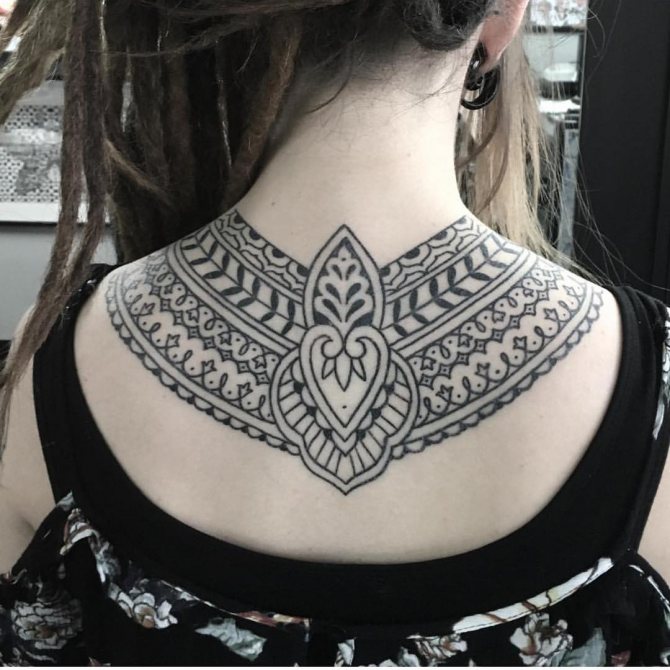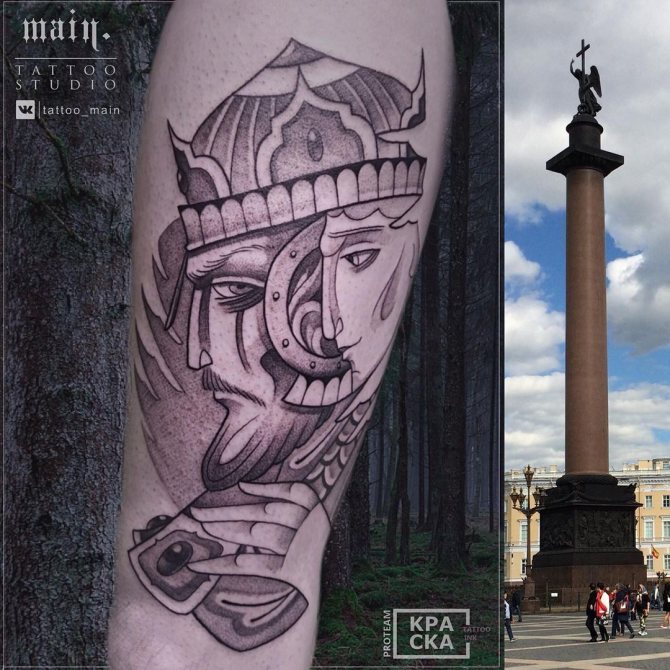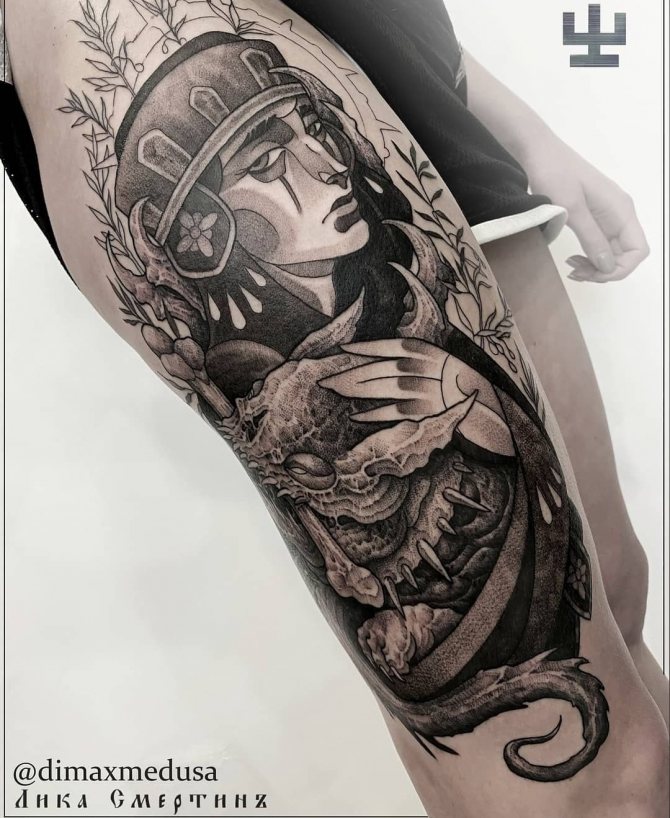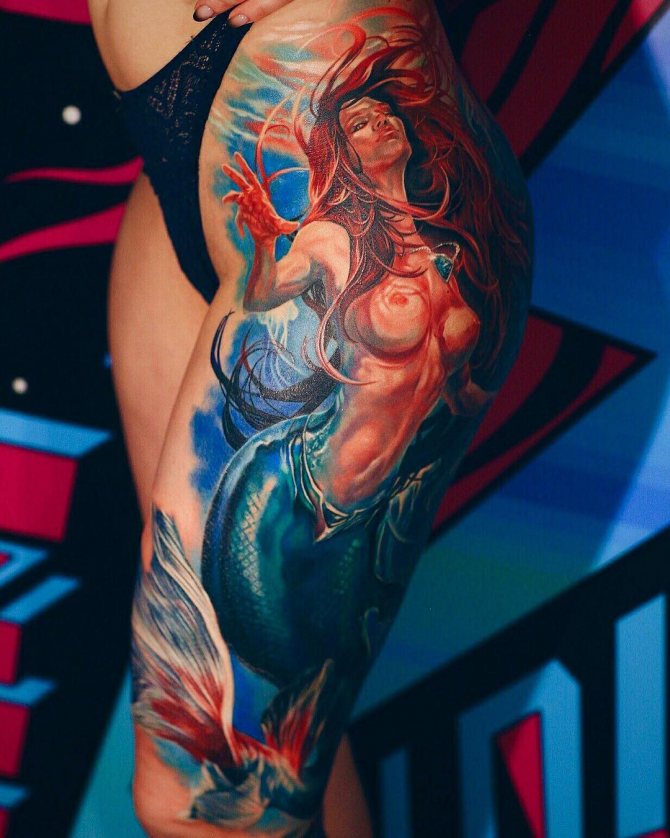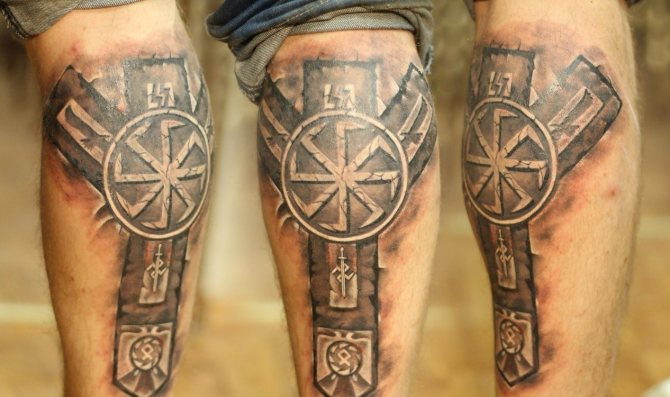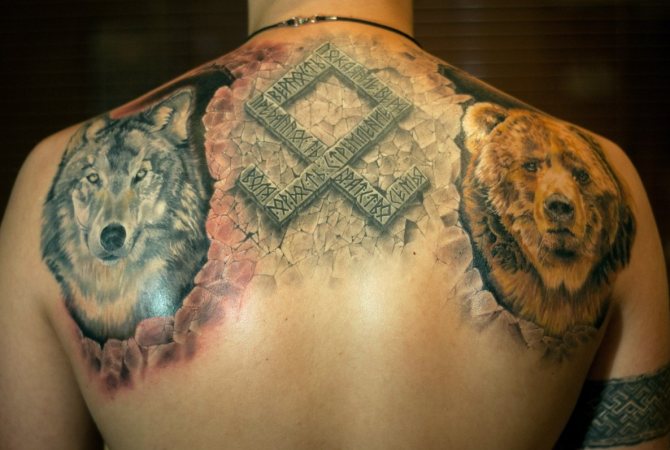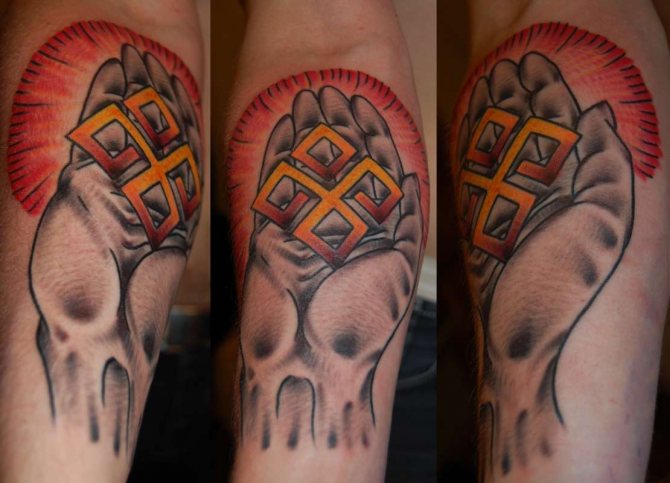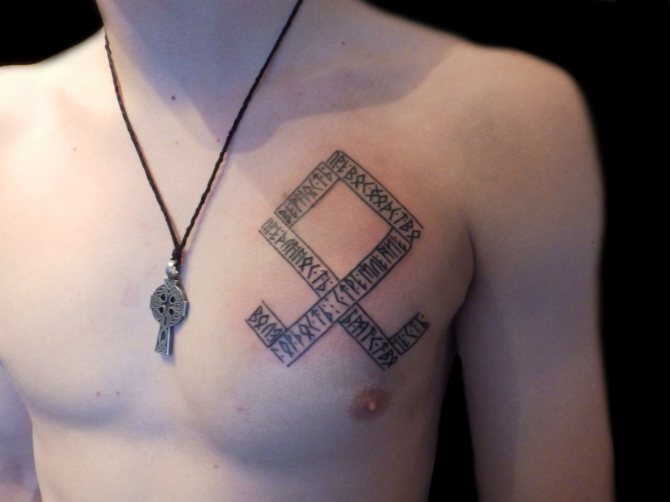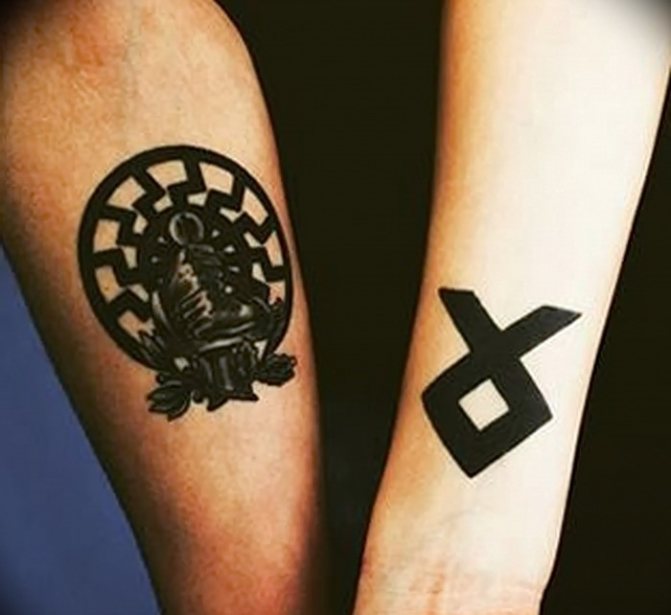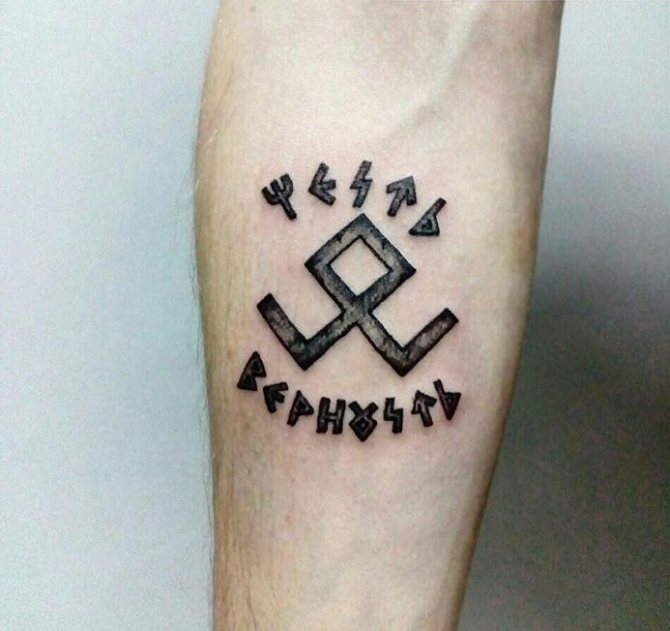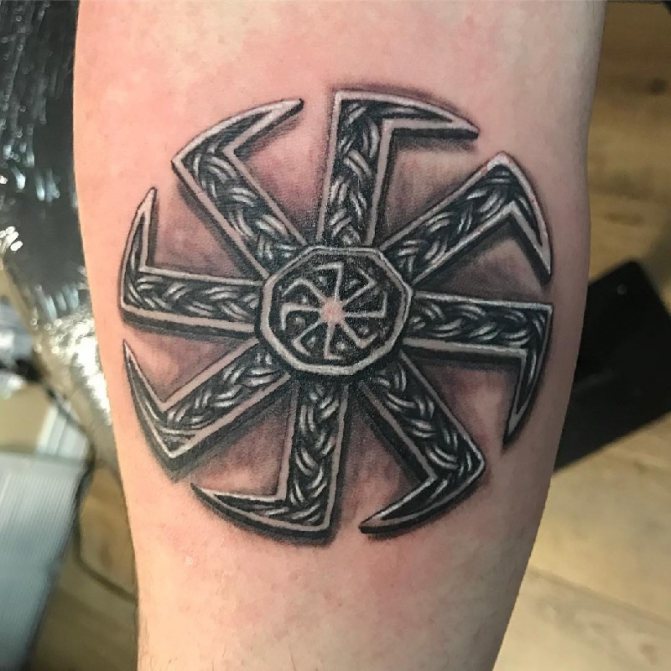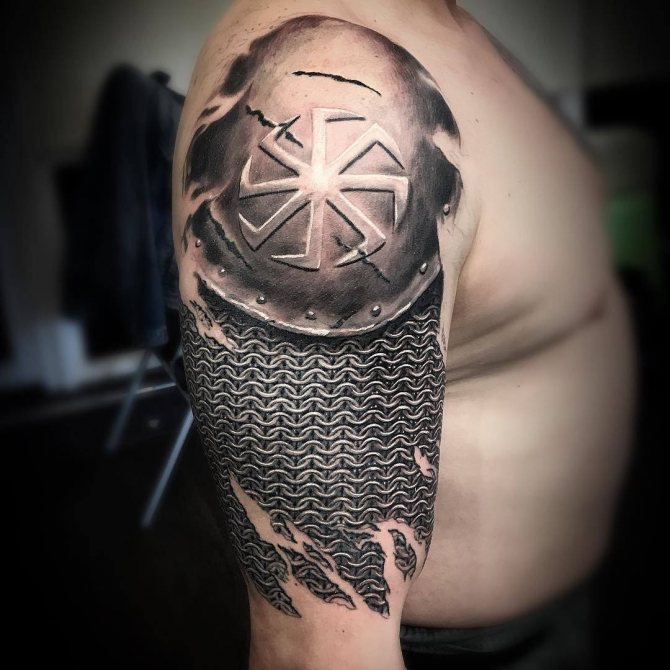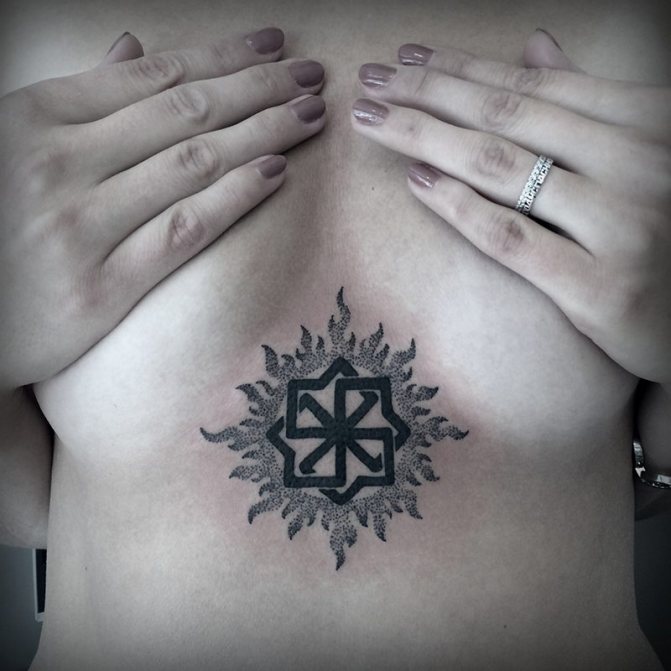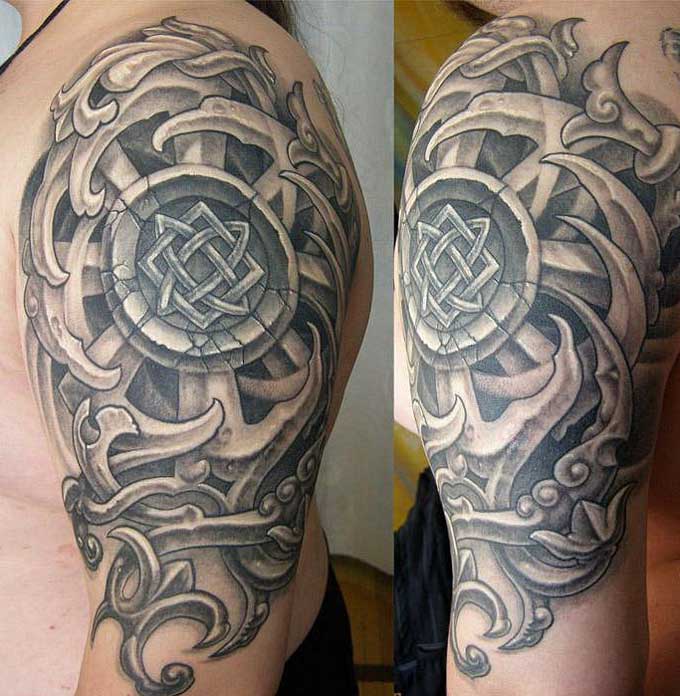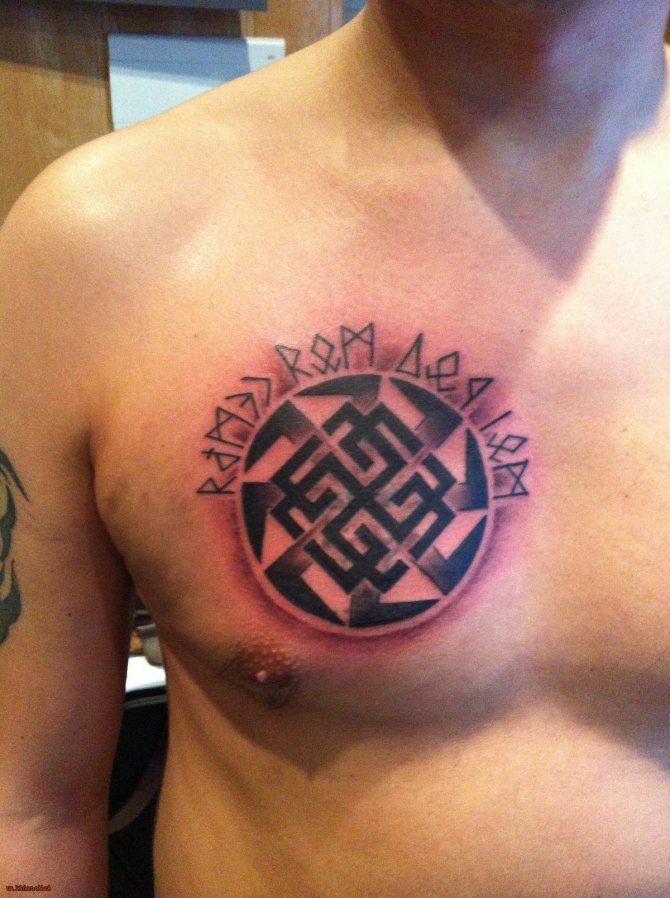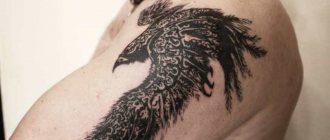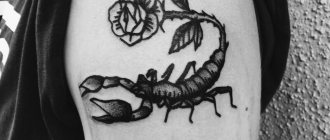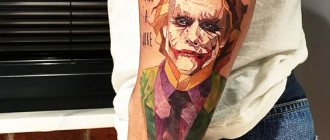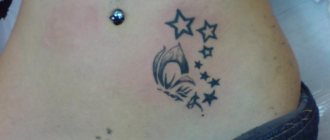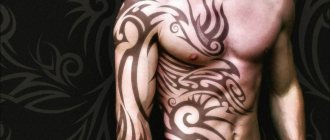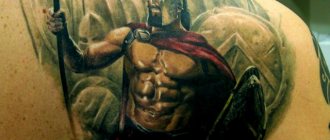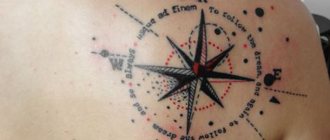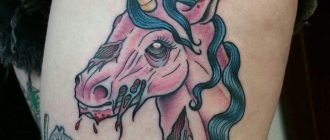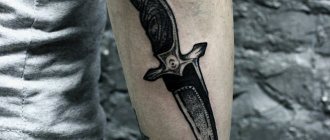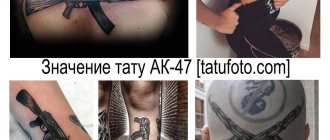Tattoo is an art form, with the help of which you can decorate your body, expressing originality and individuality. Among the variety of techniques and designs everyone can choose the best option, which makes tattoos so popular in today's world. Of particular value and significance are the ancient tattoos that came to us from our ancestors. One of these types of images are Slavic tattoos that have an infinite number of designs and meanings.
Tattoo as an example of ancient culture
Tattooing is an ancient form of artistic art. Long before James Cook coined the term in English in the late 18th century, drawings on the skin served several purposes at once. For our ancestors, tattooing was a symbol of belonging to a particular group, used to protect against evil spirits and to attract higher powers.
Count Tolstoy-American, the first Russian nobleman tattooed
The rudiments of culture in human history scholars reasonably associate with the beginning of the formation of religious thinking. With the development of civilization manifestations of culture begin to acquire symbolic character. The extant examples of ancient life - objects of everyday life, weapons, spirituality - are decorated with drawings, and their meaning carried an important semantic load.
It so happened that all peoples went through the same stages of development, including in the beliefs. Interestingly, the symbols are the more similar in different peoples, the more ancient the time interval they are dated. Thus, the symbols signifying the sun, woman, hunting and war motifs are about the same in every nation.
The ancient Slavic people are no exception. Our ancestors wore tattoos as amulets, believing that in this way they "talk" to the higher forces.
Croatian peasant women with traditional tattoos
Tattoos in the Soviet Union
Many centuries later, tattooing in Russia got its second life. But the images on the skin no longer carried the deepest religious and protective meaning with which they were endowed by the ancient Slavs. In the Soviet Union the tattoo has practically degenerated into vulgar pictures, which became the main distinguishing sign of belonging to the world of thieves.
Women in general became ashamed of having tattoos, although prisoners often decorated their skin with them. People around them began to perceive such "folk art" as a shameful stigma for life. An ordinary woman with no criminal record would never have allowed herself a tattoo.
Guys of conscription age sometimes dabbled in small tattoos, which they usually tried to remove after completing their military service. A citizen with tattoos was looked upon extremely suspiciously by the party organs. It was usually difficult for him to find a normal job. All this is due to the semantic load that tattoos acquired in the Soviet period.
Did the ancient Slavs make tattoos?
Despite the difficulty of obtaining reliable data on the tattoos of the ancestors (the skin decays very quickly), some knowledge about the Slavs is available. Mention of tattoos is present in the records of the Arab traveler Ibn Fadlan, dating back to the beginning of the 10th century. He describes the uncomplicated drawings of trees on the body of the Russians.
Another example of the presence of tattoos in the culture of peoples inhabiting the territory of Russia in antiquity is the "Altai princess of the Ukok". The body of a well-preserved mummy from the 4th century BC is decorated with animal images and ritual signs. The peoples of eastern Russia in general were active in terms of body painting.
Mummy of an Altai princess
In pagan Russia, the right to wear tattoos originally had only the Magi. They had access to the highest levels of knowledge, and tattoos helped them as a language of reference to the forces of nature. Then the art of tattooing became accessible to all.
Pagan culture, as exemplified by any peoples from which reliable data remains, always includes tattooing. Based on this and the listed factual data, we can conclude that the ancient Slavs wore tattoos.
Types and meanings of Slavic tattoo amulets
An amulet is a symbol to which magical properties were attributed. Amulets are intended to protect from misfortune and bring good. Applying a tattoo to the Slavic peoples resembled a ritual. It was always done by wise men, and the process was accompanied by trance and ritual songs.
For a tattoo to have an effect, it was not enough to put it on the skin. It was important that it remained in the more subtle bodies, so the ritual was given special attention.
All motifs of Slavic tattoos are arranged in directions:
- Runic designs and other Slavic symbols.
- Images of gods.
- Animals and plants.
Each type of tattoo had to fulfill certain tasks. The choice of tattoo was determined by the status of the person, his position in society and the occupation, such as worship, war, cultivation of the land.
Sketch of a tattoo depicting Veles, the patron sorcerer of the Magi
The Slavic runes used in tattoos
Before the advent of the Christian alphabet, runes served as a way to communicate with the gods. The runes were ascribed strong magical properties, and the most powerful ones were called names of Slavic pagan gods. A rune is not a letter, its meaning rarely fits into one sentence. A synonym for the term "rune" is "hieroglyph." They are pictures endowed with meanings, each of which can tell a whole story.
The culture of the Slavs and the Aryans was closely intertwined, so there were frequent borrowings, including writing and traditions. Runic alphabet of the ancient Slavs is surprisingly similar to the signs of Scandinavian culture. They carried meanings that Jung would later call archetypes. Putting the Slavic runes as amulets fulfilled the main task: the communication between man and the higher forces.
Slavic and Scandinavian runes
Images of gods
The gods of the ancient Slavs were anthropomorphic elements and forces of nature. The influence of the gods is comparable with their elements. It was believed that the depiction of a god as a talisman helped a person to curb a certain element. The gods patronized different spheres of life: crops, natural phenomena, wars, fertility.
High gods of Slavic pantheon
Nature motifs
The ancient Slavs had a well-developed mythology, so in tattoos you can find both real animals and fictional ones. For example, dragons or mermaids. In the Slavic version, the myth of the Slavic god protector Yarilo, who pierces the serpent or dragon with his spear, was carried over into later Christian culture. Now an illustration of this myth is depicted on a Russian coin.
Important! Favorite images for the military were wolves, bears, birds of prey. In all ancient cultures it was believed that by depicting the image of a certain animal, a person acquires its qualities.
The image of a tree was generally considered sacred. The fact is that the Slavic symbol of the tree was identified with the world axis, the beginning of all beginnings, which came to us from Nordic mythology. In this way, it is possible to use the symbol of the world axis and the beginning of all beginnings, which came to us from the Nordic mythology. The images of plants were often combined with drawings of gods or applied as bracelets.
The tree of life in Slavic mythology
Symbols of Slavic mythology
Most often in tattoos are used solar images, that is, schematic drawings of the sun. The sun was the central symbol of grace, warmth, fertility and bright higher forces among all peoples. Solar signs: kolovrat, svetorot, luminary, thunderbolt, black sun and others.
Slavyansike Tattoos - Tattoo of the Kolovrat
The Kolovrat is one of the most basic symbols Slavic tradition. It is a symbol of the wheel of the year, the sun, the change of winter and summer, the eternal cycle of life. In modern culture, the rotunda may have different interpretations: someone uses this ancient symbol in their own interests, but historically the rotunda has no negative connotations.
Men's amulets tattoos
Masculine tattoos were meant to be associated with traditional occupations: war, trade and crafts. Therefore, the following symbols are imbued with an exclusively masculine energy:
- Caroler. This is a source of physical strength and confidence. He helped in trade and political relations, giving his bearer foresight, eloquence, objectivity and wit.
Picture of a carol
- Svarog square. The sign patronized craftsmen, especially craftsmen in metal, symbolized energy, endurance, physical labor.
The image of Svarog's square
- Valkyries. In Slavic and Nordic mythology, the Valkyrie is the patroness of warriors, the protector of the souls of men fallen in battle. She guarded people from death in war and rightly guided the weapons with the hands of warriors in the name of truth. She patronized courage, nobility and wisdom. Both a special sign and fantasy images of the mythological creature were used to represent the Valkyrie.
An image of a Valkyrie holding the rune "peace" and in the upper right corner the sign of the Valkyrie
- Tattoos with images of gods. Tattoo with the image of Veles is suitable as a Slavic amulet for raising spiritual forces, attracting prosperity. Perun - stamina, strength, fury, energy. Svarog - protects the earthly existence, contributes to the spiritual well-being. Svarog - patron of agriculture.
Picture of Perun
Tattoos Inspired by Slavic Plots
Slavic tattoos sometimes use ornaments and portrait plots.which symbolize: the old times, a person's love for history and his roots.
For many people, tattoos dedicated to a historical theme help them seek answers to life's questions, build relationships within the family and learn about antiquity.
Female amulets tattoos
Ancient Slavic woman worshipped as the continuator of the family and keeper of the hearth. Her image was associated with fertility, comfort and love. She protected family values and had a subtle magical flair and intuition. Accordingly, symbols applied to the skin of women carried such a message.
The tradition of tattooing women has long been preserved especially among the Balkan Slavic peoples, such as Croats, Albanians, Montenegrins.
A modern Balkan grandmother with traditional patterns on her arms
Images most commonly used for women's tattoos:
- Bereginya - goddess of fertility, guardian of ancestral laws and patroness of mothers. Helps a girl to become a good mother and wife. Bereginya is a rune, a symbol, and an image at the same time.
Different images of the Beregini.
- Goddess Lada. She protects the woman and child, accompanies good childbirth. Especially Lada's help is needed for women who have had a difficult childbirth.
Star of Lada.
- Goddess Mokosh. She is the highest Slavic deity, patron of women's crafts, such as spinning and weaving. She is prayed to, asking for abundance and prosperity in life.
Symbol of Mokosha.
- Another sign of Mokosha is the Moon. If the sun is an archetype of everything obvious, explainable, then the moon is the patroness of all the hidden, secret and subconscious. With the help of this sign, women enhanced intuition, attracted him to ceremonies, fortune-telling, and protected against the evil eye.
Moonlit tattoo
Sketches of tattoos of animals and plants
Slavs depicted the following totem animals on the body:
- Bear. Symbolizes strength and power, helps the weak and offended. It is considered the helper of men, gives health for the continuation of the race.
- Wolf. It is associated with loyalty, but at the same time with loneliness. It is better to depict the wolf with its mouth closed. In this case, the wolf symbolizes peace and wisdom. But an open mouth means aggression, often unjustified.
- Crow. Develops wit, to help become more decisive. Means the dark forces, but at the same time protects the person from them.
- Lady Ladybug .. This insect associated with the sacrifice that mothers make for their children. Gives abundance and fertility.
- Grasshopper. Symbol of longevity and prosperity. Promotes self-knowledge and self-improvement.
- Bee .. Symbolizes diligence. Attunes to positive thinking and directs to the right path, which will lead exactly to where the man should be.
- Spider .. The Slavs associated the spider with a quiet life and material wealth. He protected from illness and injury.
Plants were more often depicted:
- Tree. A sign of fertility, the development of vitality. Usually chose trees with a thick trunk, as they symbolized long life, wisdom and tranquility. Trees with thick foliage were always depicted, so that life was prosperous.
- Fern. Protected from the dark forces of the otherworldly. Endowed a person a powerful intuition, which allows you to move in the right direction. Intertwined leaves meant tricks of fate, which a person can easily cope with.
A gallery of examples of photo tattoos for sketches:
Grasshopper Tree Wolf Bear on the arm Spider on the shoulder
On what places are tattoos with Slavic subjects
Particular rules in choosing a place for a tattoo with Slavic subjects do not exist, but still there are some laws, which obey the desire to make tattoos in one place or another.
The most popular place on the body for the application of the Old Slavic tattoo is the arms. On the shoulders and forearms, the skin heals relatively quickly, and the owner himself can freely admire the drawings on the body.
In second place in popularity are the shoulder blades and upper back. This area of the body has a large area, on which there is no shame to apply large images of big gods.
In third place is the chest. Takzhe vast area of skin, in addition the application of tattoos on the left breast ensures the location of the figure next to the heart.
Neck, especially its back part, too popular place. Laconic symbols or runes look good and neat on the neck.
Tattoo of a Valkyrie sign on the back and neck
The ancient Slavs had some tattoos applied directly to the back of the head. So, for example, a tattoo of a caroler sign was made to young men going into adulthood.
On the legs wearing Slavic tattoos is rare. All symbols are directly related to deities or reverence for other higher powers. Feet are not the most appropriate place to depict a god.
For women decoding symbols
Ladinets. Symbolizes love and happiness, protects a woman from trouble. The goddess Lada in ancient mythology was a symbol of beauty and health. It was for the preservation of health and youthfulness that women applied Ladinets.
Bereginya. It is considered a symbol of fertility and prosperity (both physical and spiritual). Women with such a tattoo will always have prosperity and comfort in the home. It helps to reveal the feminine principle.
Star Lada. Strengthens the health of the mother and child. Especially necessary during pregnancy and childbirth. Obereg gives longevity.
Sweetovit .. The image was applied to women during the first pregnancy to protect the unborn child from the negative effects of otherworldly forces. Nowadays such tattoos are more often made by creative people, as Svitovit brings rationality into life.
A gallery of examples of photo tattoos for sketches:
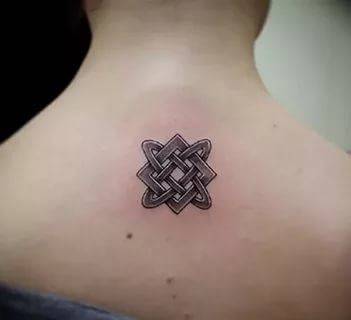
Star of Lada on the back Ladinets on the neck Svitovit on the back
Where to get a tattoo Slavic amulets
Tattoo with the image of a Slavic amulet can be done in any tattoo salon or with the master at home. How to choose a salon or a master?
- Make sure the salon has a good reputation. Check the reviews, find clients, ask them questions, check the license of the masters.
- Give preference to masters who specialize in Slavic themes. They will be able to create a suitable exclusive sketch, as they themselves are interested in a quality product.
- Discuss all the details and find out about the possibility of a contract. Good salons provide guarantees.
Choosing a tattoo - a responsible task, especially when it comes to energetically active characters. In this matter should not be in a hurry, as the ancient Slavs, who were not allowed to make tattoos before the onset of 30 years.
